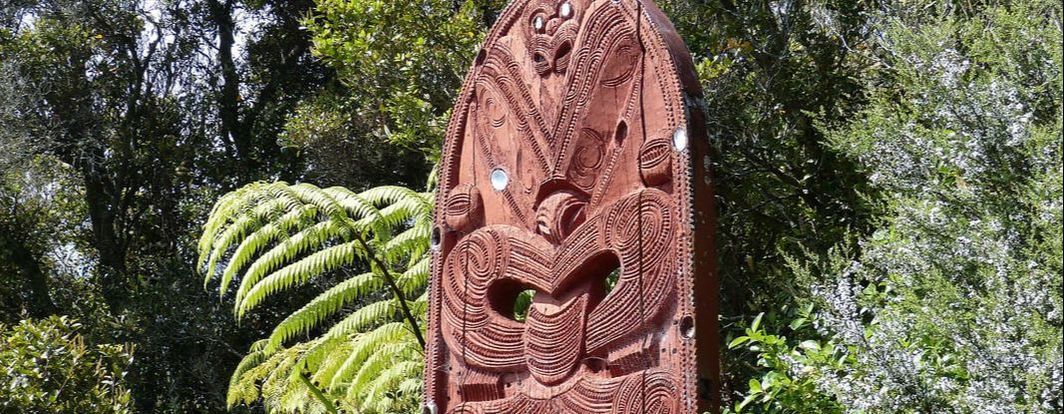|
The Māori language, or te reo Māori, is one of the three official languages of New Zealand. We often use Māori words within English writing, but there are a few points to remember to ensure that the Māori language is used respectfully and correctly. Before I start, just a note: this is intended as a basic guide to using Māori words and names within an English text. For more detailed information, see the external source list at the bottom of this article, or ask a licenced translator or interpreter. Check the style guide of your company or institution first to see your organisation's style rules. Italics for foreign words
In many English-language texts, when a foreign word is used that may not be in common use in English, the word is put in italics. However, as Māori is an official language in New Zealand, it does not need italics. Only use italics within the usual English-language grammar rules. Tohutō/macrons Tohutō, or macrons, can make quite a difference to the meaning of words in Māori. Using them is important: first of all to get the meaning correct, but also to ensure you respect the language as it should be used. Here are three words with completely different meanings depending on where the tohutō is used:
A tohutō indicates that a vowel should be pronounced as a long vowel and that the emphasis is on this vowel. In the past, double vowels were used to indicate a long vowel. Some iwi still use this spelling variation, but most use the tohutō. Check who your readers will be and make sure you use the correct spelling variation. If your content is for a general audience, use a tohutō. The use of double dots is not acceptable.
In some cases, a tohutō is used in the plural, but not in the singular. Check the dictionary for spelling.
Tohutō should be retained in proper names where it is known. Te Taura Whiri i te Reo Māori recommends using tohutō for names dating pre-1950s. Otherwise, check the preferred spelling, as people are entitled to spell their names whichever way they wish. If the person is still living, use the form that they prefer or give consent to use. Check a Māori dictionary if you are unsure of the spelling of a word.
Microsoft Word now has tohutō built in to New Zealand English keyboard layout. Just hit the tilde key (~) and then the letter that you want to put the tohutō on. Otherwise, you can use the ‘insert symbol’ function in Word or create keyboard shortcuts. Spelling A good resource for the spelling of names of New Zealand historical and contemporary figures is the Dictionary of New Zealand Biography. Te Aka online Maori language dictionary (see above) is also useful to check spelling and the correct meaning of the word you are using. New Zealand may be referred to as 'Aotearoa New Zealand'. It is not 'New Zealand Aotearoa' or 'Aotearoa/New Zealand'. If an organisation is known by both its Māori and English names, use a slash (/) or pipe (|):
Note that the order of the translations is different for different government departments and organisations. Check their website how that organisation styles their name. Capitalisation Use New Zealand English grammar rules for capitalisation of Māori words within English text. As with English language grammar rules, articles or prepositions are not capitalised in full titles.
If an organisation’s name has a definite article, this is capitalised, otherwise, definite articles follow English grammar rules.
With proper names, the first letter of the name is capitalised as in English. If there is an initial ‘Te’, the following word is also capitalised.
In a compound name, the only parts of the name capitalised are those that are themselves proper names.
Where proper names of geographical features and iwi groupings are followed directly by the noun the name refers to, the first letter of the noun is generally not capitalised.
For names of organisations or departments, the initial letter of the first word is capitalised, as well as the first letter of all proper names, nouns, adjectives and verbs.
Note: If an organisation does not confirm to this rule, use the organisation’s preferred spelling. Hyphens Te Taura Whiri i te Reo Māori suggests using hyphens as little as possible in compound names. However, it does suggest using them in very long names with many components. For proper names with fewer than 6 syllables or components - no hyphens.
Proper names with 7 or more syllables or components are separated with hyphens between each part.
When ‘Te’ or Te Tai’ are at the start of the name, these are not hyphenated.
except with a following ‘o’.
Plural ‘s’ Te reo Māori has no plural ‘s’, therefore do not use the plural ‘s’ with Māori words.
Context can be used to indicate singular or plural.
The New Zealand Oxford English Dictionary allows a plural ‘s’ on ‘Kiwis’ when referring to the people of New Zealand, as it is a colloquial term. Possessive ’s and ‘is’ and ‘has’ contractions Do not use the possessive apostrophe s ('s) and the 's contraction for is or has. Rephrase to avoid using 's.
What next? If you have written content that includes te reo Māori words and this all sounds too overwhelming, I can help. As a business editor and plain language specialist, I will help you publish better business and government content so that
Contact me today to discuss how I can help you achieve your goals with clear, professional writing. External Sources:
Related articles Comments are closed.
|
Hi, I'm Marja!You'll find all my advice about creating professional, Categories
All
Previous PostsPlain language
Business editing New Zealand English series The editing process General editing Technical |

